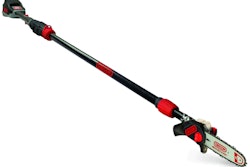
With Lyme disease posing a series threat to landscape workers, companies like Terminix and Harris Interactive are working together to find solutions and answers.
The companies recently joined to identify tick-related experiences among consumers. Their studies found that 43 percent of respondents have been bitten by a tick or know someone who has.
Also, 33 percent of respondents have contracted or know someone who has contracted Lyme disease.
The Centers for Disease Control and Prevention (CDC) gets approximately 30,000 cases of Lyme disease each year. However, recent preliminary reports from the CDC show that the disease is more common than reported – infecting 300,000 people nationally each year.
In the last 10 years, the number of cases reported has increased by 45 percent.
Other tick-borne illnesses include Rocky Mountain spotted fever, ehrlichiosis, human babesiosis, tickborne relapsing fever, tularemia, Powassan virus and Heartland virus. No vaccines are currently available to protect against tick-borne illnesses and many tick-borne diseases have no known treatment.
According to the Harris Poll survey, the most popular technique for tick control is applying a DEET-based spray (38 percent), checking for ticks (36 percent) and wearing long sleeves (29 percent).
Other tips:
- Bathe or shower as soon as possible after coming indoors (preferably within two hours) to wash off and more easily find ticks that are crawling on you.
- Keep grass mowed, weeds pulled and leaf litter managed. Trim tree branches and shrubs around the lawn edge to allow more sunlight penetration.
- Walk in the center of trails, keeping away from bushy areas.
- Wear long-sleeved shirts, pants and a hat when outdoors. Light colors make for easy tick detection.
- Use products that contain permethrin on clothing. Treat clothing and gear, such as boots, pants, and socks. It remains protective through several washings. Pre-treated clothing is available and remains protective for up to 70 washings.
- Use DEET-based insect repellent applied to clothing, particularly the lower body and the arms.
- Carefully inspect your body after exiting vegetated areas. Have a buddy check the back of the head.
- Wash clothing in warm water and detergent immediately. Or, tumble clothes in a dryer on high heat for an hour to kill remaining ticks. Never throw potentially infested clothing in a hamper with other clothes or onto the floor.
- Thoroughly examine pets for ticks after walking them in wooded areas or fields. Consult your veterinarian for tick treatment products.
- To remove a tick imbedded in your skin, do not grasp it by the abdomen and pull. You may squeeze its fluids into your skin, which increases the chances for infection. Use fine-tipped tweezers to grasp the tick by the head next to the skin and slowly pull backwards. Working slowly permits the tick to withdraw its mouthparts so they do not detach and remain in the skin possibly causing infection. Once the tick has been removed, cleanse the area well with soap and water. You may want to disinfect the bite site with alcohol or apply an antibiotic cream.










